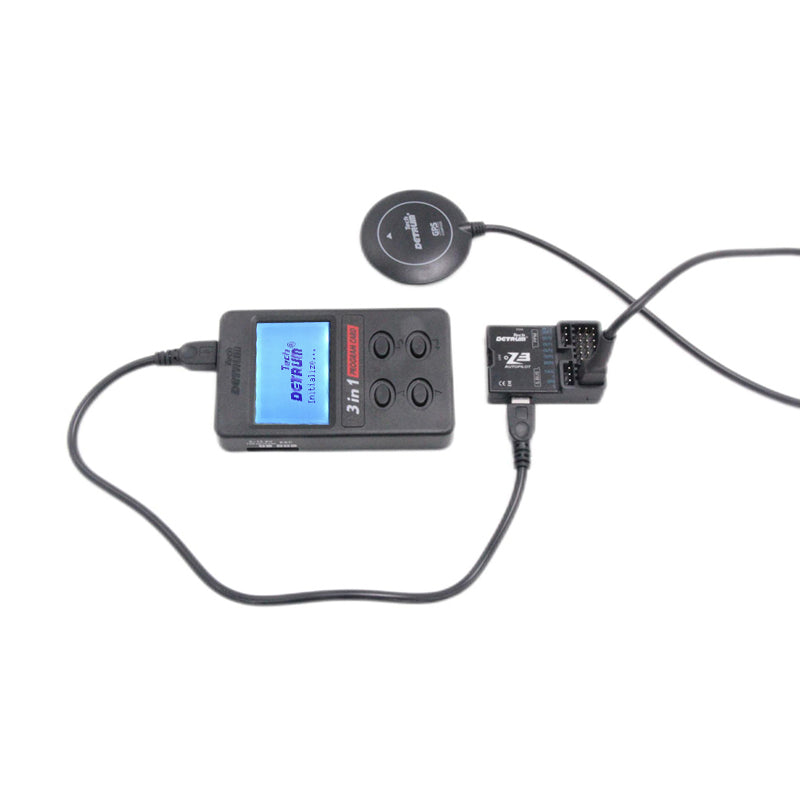Calibrating your RC airplane's flight controller is a crucial step to ensure optimal performance and flight stability. Whether you’re flying Dynam models or other RC planes, regular calibration guarantees smoother flights and precise controls. In this guide, I’ll share insights into when and how to calibrate your flight controller, with a focus on the Dynam brand and my personal experience using the Detrum Z3 Flight Controller for Nitro & Gas Airplanes w/ GPS and 3-in-1 Program Card Combo.
Why Calibration Matters
A properly calibrated flight controller is essential for the following reasons:
-
Improved Stability: It ensures your plane maintains balance during maneuvers.
-
Accurate Sensor Readings: Calibration corrects discrepancies in accelerometers, gyros, and GPS systems.
-
Enhanced Safety: Reduces the risk of erratic behavior or crashes caused by faulty control inputs.
Regular calibration is particularly vital for advanced models like the Dynam Messerschmitt BF-109 or the Dynam A-10 Thunderbolt, as these planes demand precise controls for high-performance flights.
When to Calibrate Your Flight Controller
Here are the most common scenarios when calibration becomes necessary:
1. After Initial Installation
Whenever you install a new flight controller airplane, such as the Detrum Z3, calibration is the first step before takeoff. This ensures all sensors are synchronized with your airplane’s orientation.
2. After a Crash or Hard Landing
Crashes or hard landings can knock sensors out of alignment. Recalibrate your controller to restore proper functionality.
3. After Firmware Updates
Updating the firmware of your flight controller may reset its settings. Calibrate it again to ensure compatibility with the new software.
4. Before Every Flying Season
Long periods of storage can affect your equipment. A quick calibration at the start of the season ensures everything is ready for action.
5. When Changing Environmental Conditions
If you’re flying in drastically different locations or weather conditions, such as high altitudes or humid climates, recalibration compensates for environmental variances.
How to Calibrate Your Flight Controller
Calibrating the Detrum Z3 Flight Controller is straightforward with its 3-in-1 Program Card. Here’s how I usually do it:
-
Ensure Level Ground: Place your Dynam plane on a flat, stable surface.
-
Power On the System: Connect your flight controller and power up your transmitter and receiver.
-
Access Calibration Mode: Use the 3-in-1 Program Card to navigate to the calibration menu.
-
Follow the Prompts: The card guides you through accelerometer, gyro, and GPS calibration steps.
-
Test Before Flight: Perform a quick test flight to verify stability and responsiveness.
For Dynam planes equipped with GPS, such as the Dynam Primo, I’ve found the GPS calibration feature invaluable for accurate waypoints and return-to-home functionality.
My Experience with the Detrum Z3 Flight Controller
Flying with the Detrum Z3 has been a game-changer for me. One of my most memorable flights was with my Dynam Messerschmitt BF-109 after a fresh calibration. The plane’s stability in gusty winds was remarkable, and the precise controls made aerobatic maneuvers effortless. The GPS feature also came in handy when testing waypoint navigation.
The 3-in-1 Program Card is particularly user-friendly, even for beginners. Its intuitive interface simplifies what could otherwise be a complex process, making it a perfect match for both Nitro and gas-powered Dynam models.
Common Calibration Mistakes to Avoid
-
Skipping Calibration After Firmware Updates: Always recalibrate after an update to prevent erratic behavior.
-
Calibrating on Uneven Surfaces: This can result in incorrect sensor readings.
-
Ignoring Sensor Errors: If calibration fails, troubleshoot sensor issues before attempting to fly.
-
Rushing the Process: Take your time to ensure each step is done correctly.
Frequently Asked Questions (FAQs)
1. How often should I calibrate my flight controller?
-
Ideally, before every flight session, especially if you’ve made changes to your setup.
2. Can I calibrate my flight controller indoors?
-
Yes, but ensure you’re in a stable environment with minimal magnetic interference.
3. What happens if I skip calibration?
-
Your plane may exhibit erratic behavior, such as unsteady flight or inaccurate GPS navigation.
4. Is the Detrum Z3 suitable for beginners?
-
Absolutely. Its straightforward setup and calibration process make it beginner-friendly while offering advanced features for experienced pilots.
Comparison Table: Calibration Needs for Dynam Planes
| Model | Calibration Frequency | Special Notes |
|---|---|---|
| Dynam Messerschmitt BF-109 | After every 5 flights | Ensure GPS calibration for accurate navigation. |
| Dynam A-10 Thunderbolt | After firmware updates | Test stability in windy conditions. |
| Dynam Primo | Seasonal and location changes | Ideal for STOL operations. |
Conclusion
Calibrating your RC airplane’s flight controller is not just a maintenance task—it’s an investment in your plane’s performance and your flying experience. With models like Dynam’s BF-109, A-10 Thunderbolt, and Primo, proper calibration ensures you make the most of these advanced aircraft.
If you haven’t tried the Detrum Z3 Flight Controller yet, I highly recommend it. Its reliability and user-friendly design have significantly enhanced my flights, especially with Dynam planes. So, take the time to calibrate—your RC airplane will thank you in the skies!




